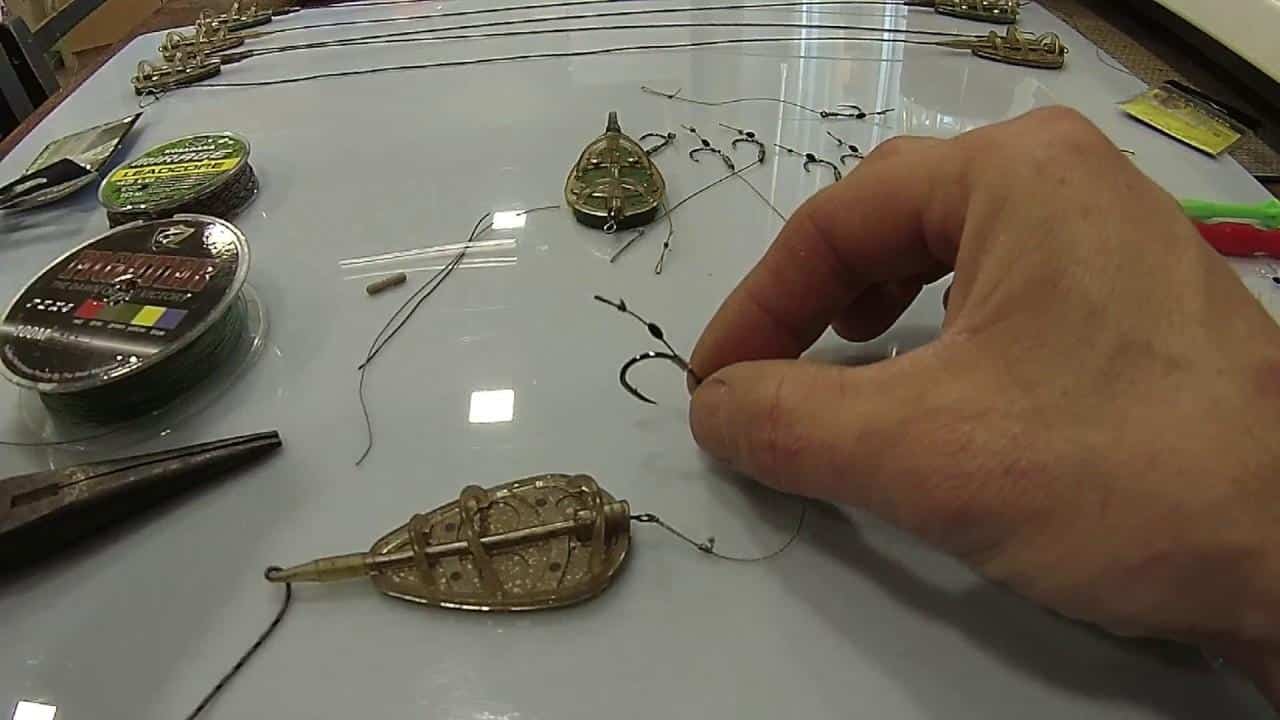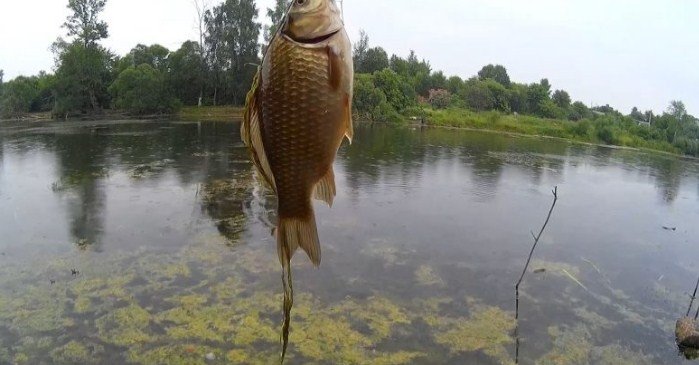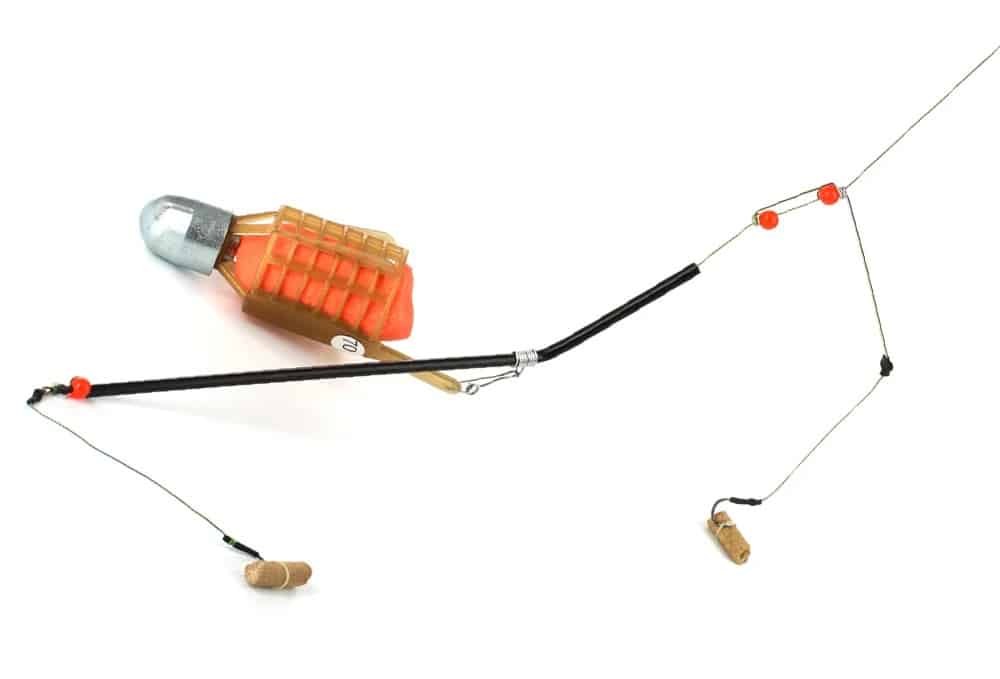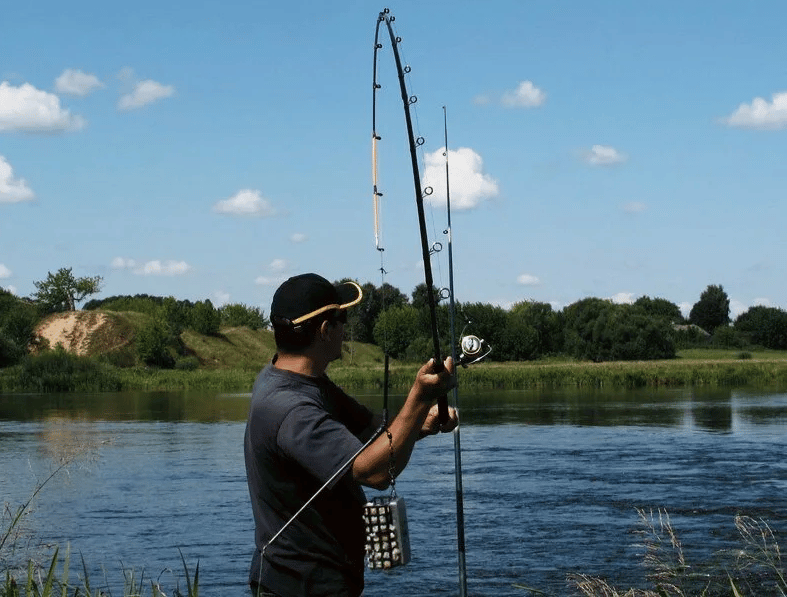The method is not an ordinary
open-type feeder with a built-in weight. By and large, this is a small tray with bait laid out on it for
carp , bream or other fish, when a baited hook on a small leash is sunk into the feed. Fishing with the method has only one drawback – it cannot be used in standing ponds, since the bottom in them is often muddy.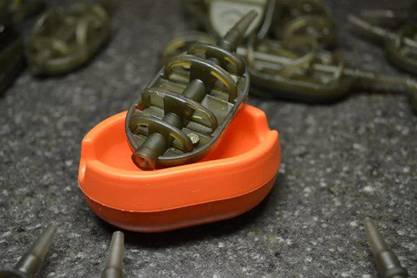
- General information
- Differences between the method and other methods of feeder fishing
- Nipple spoon
- Nipple plug
- Makushatnik
- Types of feeders method
- Making a feeder with your own hands
- Installation types
- Blind installation
- Inline
- Tackle selection
- Feeder
- Coil
- Hooks, fishing line
- Do-it-yourself bait and bait on the flat method
- Recommendations for fishermen
- Поделиться ссылкой:
General information
The method feeder is suitable for catching any white fish. The British were the first to use an open spring with a flat bottom, which was combined with a weight (flat method). The lead plate facilitates the lowering of the trough with the base downwards and the bait upwards. Over time, it turned out that open access to the stern with a hook with a nozzle located in it has many advantages, this led to the creation of triangular springs loaded on one of the sides. Due to this, the feeder is lowered to the bottom in the only possible position, this makes it possible to install a hook with a nozzle on an accessible part of the rig.
The bait on the feeder is attached in a special way – at the bottom there is a viscous fraction, on top of which the dusty fraction is molded. The bait is clamped with a mold, which makes it dense, giving it a complete look.
Lying down on the bottom of the pond, the spring is enveloped in a cloudy cloud of bait that attracts white fish of any size, but the hook is equipped with large baits suitable only for large specimens. Due to its ergonomic shape, the feeder can be thrown over long distances of 50-120 meters.
Differences between the method and other methods of feeder fishing
The method feeder is similar to other methods for catching white fish.
Nipple spoon
Method fishing is very similar to a nipple-spoon, which has the same
inline rig , one hook with the ability to attach a hair, arcs for fixing the bait, but a very heavy base often leads to the immersion of this tackle in the muddy bottom, in addition, it is not shipped, but, accordingly, there is no confidence in the oriented lowering to the ground.
Nipple plug
It resembles a banjo feeder. A weight is installed in the cork from the eggplant for oriented lowering into the water. Minuses:
- a patch of food is sometimes covered with a cloud that rises from the bottom;
- the small size of the cork does not make it possible to clog a large amount of bait;
- you will not be able to cast over long distances;
- the small size of the cork does not allow masking a hook with a large bait.

Makushatnik
This is a block of top, where the hooks are recessed. Modern ways of using the
top plate involve a lead plate, where the briquette is fixed. Minuses:
- it is impossible to cast over long distances;
- a homogeneous, non-dusting composition for feeding is sometimes covered with silt from the bottom;
- a heavy plate with a top can get bogged down in muddy soil.
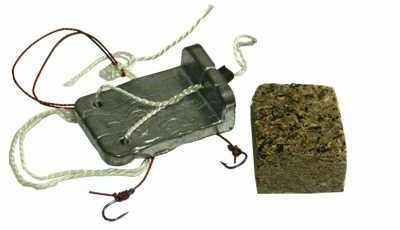
Types of feeders method
The improvement of feeders has given rise to a large number of varieties of feeder gear in terms of design, shape, purpose, dimensions. All feeders method can be divided into 3 large groups:
- scoop – half-closed feeders;
- banjo – small round-shaped feeders that have sides;
- classical method .
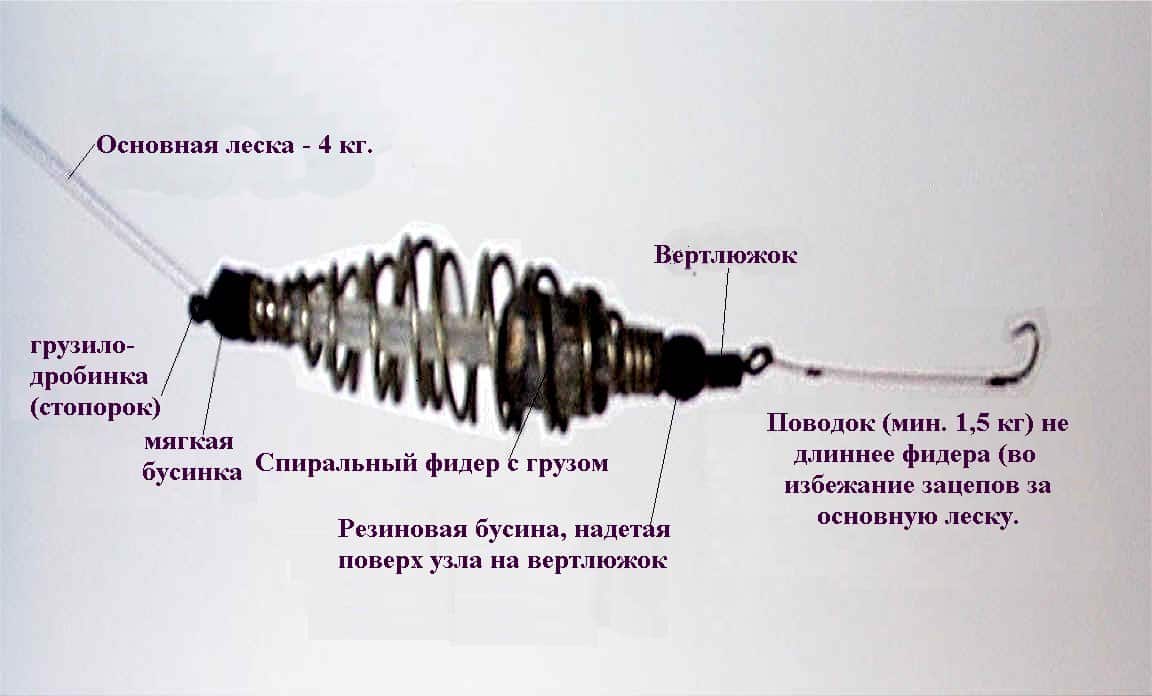
pellets , but they can also be used for standard groundbait. Due to its design, the scoop can deliver bait to any depth without losing it. Banjo feeders are round in shape, light in weight and size. They are mainly used when fishing for cautious fish. The classic flat method is used most often, these feeders are used with active biting. They differ among themselves in weight, size, base shape, number of ribs. Most feeders are sold in a set with a press – a device for the densest possible filling of bait. This press is often referred to by anglers as treadmills.
Making a feeder with your own hands
Fishing on the method allows you to make a homemade feeder for the feeder with your own hands. The main requirement for them is that the feeders must be within the permissible test of the feeder, otherwise, when casting over long distances, the fishing rod can be broken. For the manufacture of feeder feeders you will need:
- stainless steel wire (the section is selected taking into account the size of the spring);
- a steel pin with which the feeder is removed from the mold and a hole is formed;
- mold for making a base from lead (bar, gypsum);
- silicone tube (protects the line).
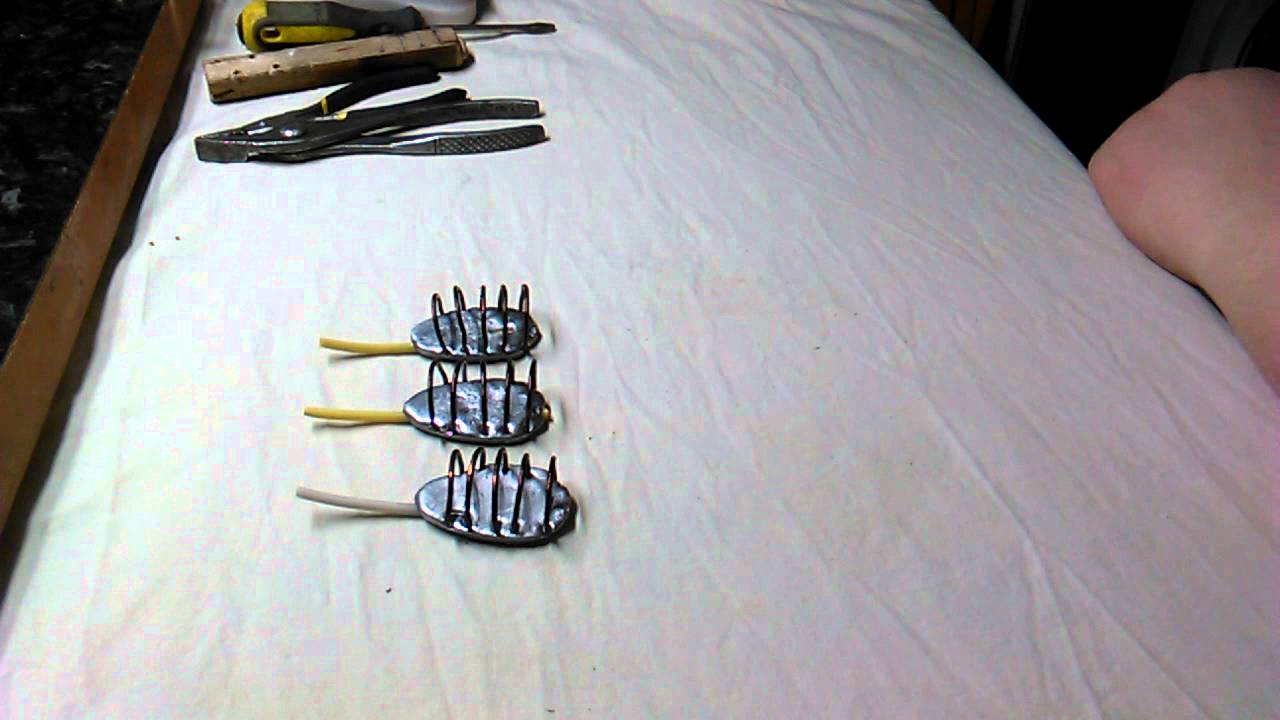
Installation types
There are many ways to mount the feeder method for the feeder, but for catching trophy fish, not all fixing methods can be used equally effectively.
Blind installation
Self-locking mounting option. During the bite, the fish makes a jerk and self-chokes under the mass of the spring. For the base, a fishing line with a cross section of 0.26-0.30 mm is used, taking into account the weight of the intended prey, we pass it through the body of the spring. Then, at one end, we knit a small loop using a figure eight knot
. Then we put on the connector through the fishing line and fix the swivel with a noose loop. Then we pull the connector onto the swivel. Then we tighten the line so that the swivel and the connector fit tightly in the body of the feeder. A leash of about 9-15 cm is fixed to the swivel . We retreat from the spring about 50 cm and make a figure eight loop, here the swivel is attached with a stranglehold
. It will connect the tackle to the main line. Many fishermen, during the manufacture of tackle, knit leadcore instead of fishing line
.– braid with a lead core. Due to this, the rig does not twist and turns out to be submerged at the bottom, which does not frighten the fish so much.
Inline
Sliding mounting is used for catching cautious fish when it is inactive, because when biting carp, bream, large roach, you do not need to move the feeder. To knit this rig, a fishing line of the same section is used as with a blind installation, the total length of the tackle is about 50 cm. A swivel is knitted to the end of the fishing line, then the main line is tied to it. After that, a bead is threaded through the second end, its main task is to prevent the knot from hitting the spring. Then we put on the feeder, reinstall the bead and tie the swivel, the bead is chosen so that it fits tightly on the line. Next, we tie a leash of about 9-15 cm to the swivel. With this installation, the feeder will move freely along the fishing line.
Tackle selection
The method trough is ideal for catching white fish at any time of the year. But for fishing to be truly effective, you need to choose the right rod and equip it.
Feeder
Much attention must be paid to the choice of a quality
rod , since it bears the main loads when fishing on the method. Therefore, the feeder must meet the following requirements:
- The length of the rod is at least 2.7 meters. This is the only way to easily throw the bait at the required distance. It is not recommended to buy very long blanks, the maximum size should be up to 3.9 m. It is difficult to fish out trophy fish with a long rod, because the more the lever, the more effort you need to apply to the base.
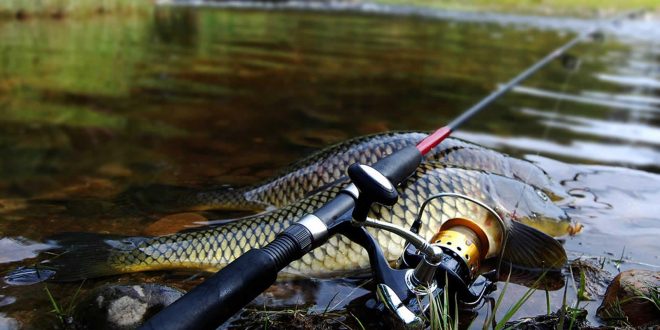
- The test of the fishing rod depends directly on the weight of the ground bait in the feeder. Basically, the weight of the feeders is in the range of 30-100 grams, because the casting of the feeder most often has the same characteristics.
- To reduce the load on the rod when casting a heavy feeder, it is advisable to choose a blank with a slow action. When fishing for trophy specimens, slow action is also considered much preferable.
- The rod material is also important for feeder fishing. It is best to buy blanks made of high modulus graphite, this rod can easily cope with any powerful jerks of fish. Composite will also be a perfectly normal option for method fishing.
Coil
For fishing with the method, only
spinning reels are used , their size is chosen so that at least 150 meters of line with a cross section of 0.30 mm is placed on the spool. It is necessary to consider the following points when choosing this snap-in element:
- The gear ratio is not very large. 4.5: 1 is enough.
- The reel must be selected with a bytrunner . This is a prerequisite when fishing with a method.
- The number of bearings in the coil is at least 5 pieces.
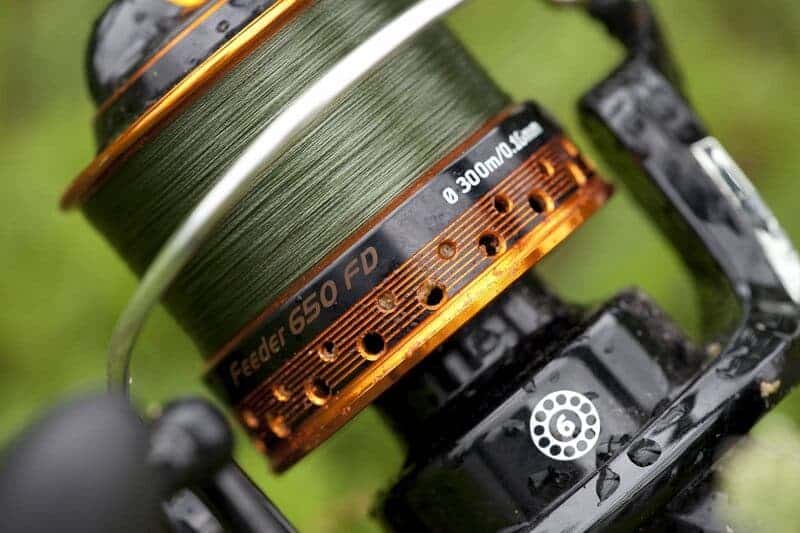
Hooks, fishing line
The acquisition of quality hooks, feeders and lines is also an important step in the installation of the feeder method. The fishing line must meet the following requirements:
- be invisible to fish;
- have high wear resistance, otherwise, when knitting sliding assemblies, the fishing line will quickly wear off;
- be strong enough to withstand the resistance of the fish when fishing.
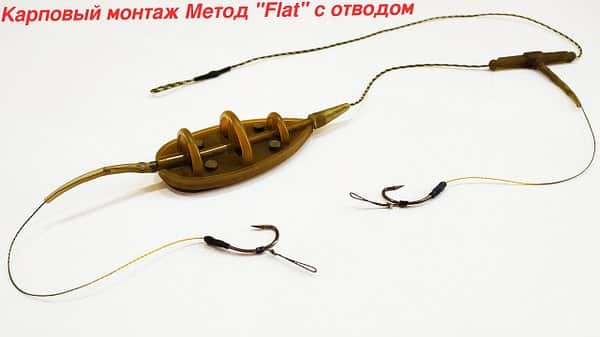
casting of the gear : https://youtu.be/GXlIjknEot8
Do-it-yourself bait and bait on the flat method
The bait is made very viscous and dense in consistency, but at the same time it must disintegrate at the bottom, otherwise it will be in a lump, without attracting fish. As a guide, it should wash out of the trough after half an hour. You can achieve the required consistency by adding water to the groundbait. Do not immediately moisten all the feed, you need to underfill a little, so that you can then adjust it on the pond. If fishing is carried out on a teat, then the bait must resemble wet clay in its mass. In this case, it is imperative to add flavorings to the feed, since this bait is visually not so noticeable, because it does not get dusty. You can buy a special bait for the method in the store and add an astringent (for example, molasses) to it or do it yourself.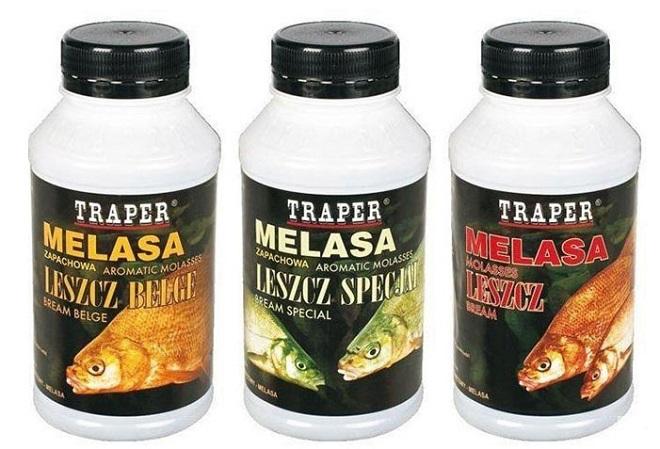
- cottage cheese – 200 gr;
- white bread – 350 gr;
- ground peas – 200 gr;
- cake – 200 gr;
- hemp oil;
- ground garlic.
Second recipe:
- corn flour – 250 gr;
- crackers – 1 kg;
- ground seeds – 150 gr;
- semolina – 350 gr;
- dry cream – 25 gr;
- bran – 150 gr;
- hemp – 150 gr.
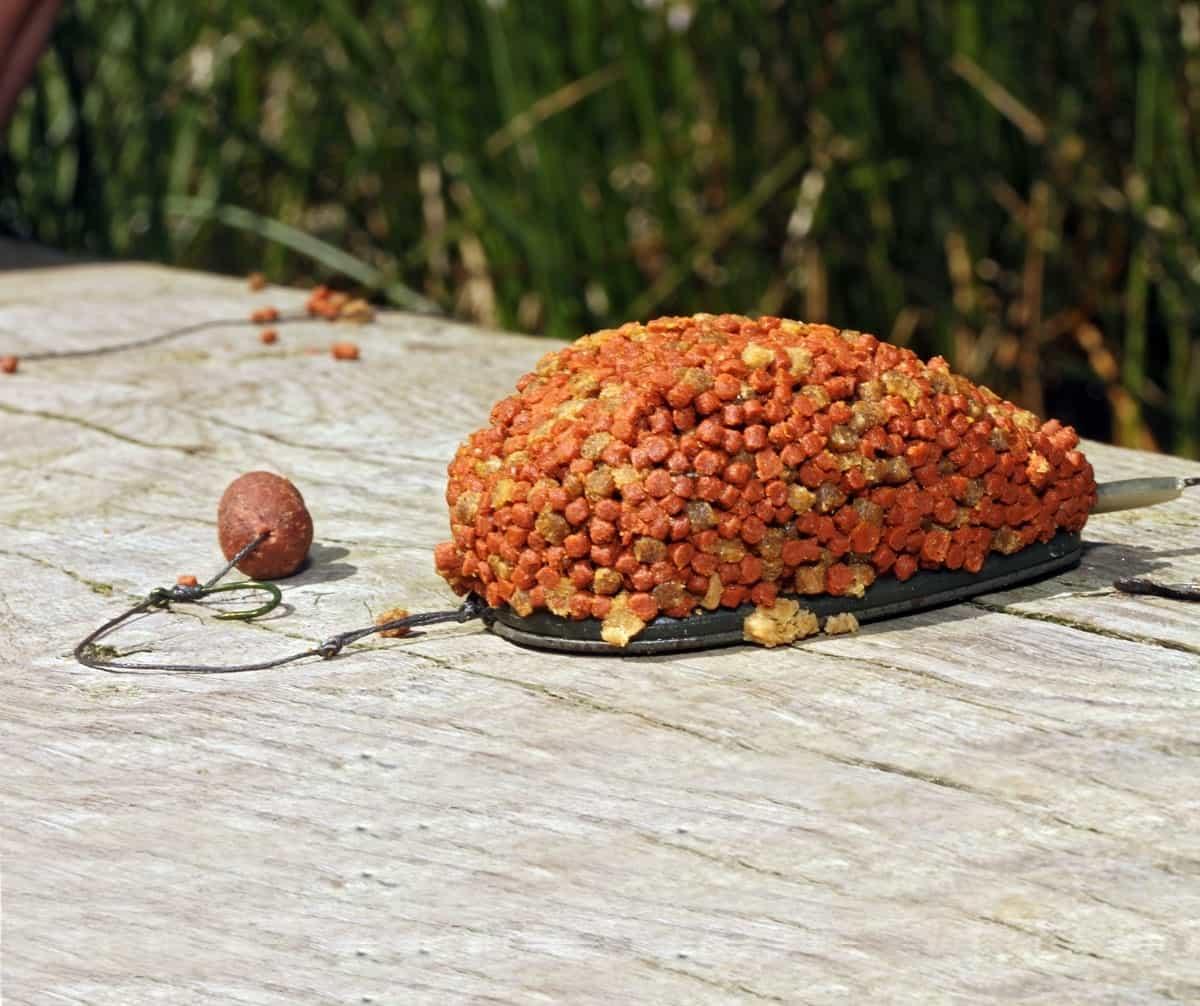
maggot ,
bloodworm ,
corn ,
peas ,
boilies , and polystyrene are used as bait
. Fishing on a feeder method – video from the shore of the reservoir: https://youtu.be/RlKu-fgb0rA
Recommendations for fishermen
When fishing with this method, beginners should follow these tips from professional fishermen:
- At the beginning of fishing, you need to feed the fishing spot . To do this, you can use a fishing slingshot or a volumetric feeder with a small shipment.
- Casting accuracy must be at its best . As well as when fishing with a feeder with the installation of other rigs, during fishing with a method, the smaller the conventional bait spot where the spring falls, the better. To control the direction of the cast, you can use a landmark that is located on the other side. The clip on the spool will allow you to throw it at the same distance.
- During a sluggish bite, constant re-throws of the tackle can only worsen the situation – a very heavy tackle makes a strong sound when hitting the water, this will only scare off cautious fish.
- With an inactive bite, the situation can be corrected by adding live components to the feed – bloodworms, maggot, chopped worm are excellent for this.
- The fisherman must have several different flavors available .
The basics of feeder fishing – training video: https://youtu.be/OZTfoYlWoRc As you can see, the method has many advantages, but only one drawback. On ponds with no current, the feeder can get stuck in the silt. On other bodies of water, this method can effectively catch crucian carp, carp, borer, roach and other white fish.
